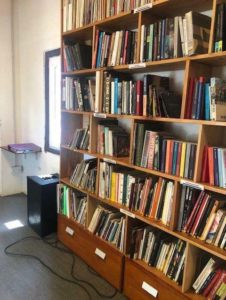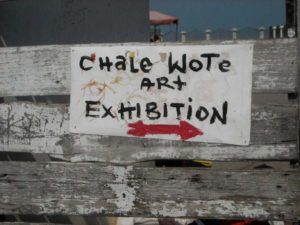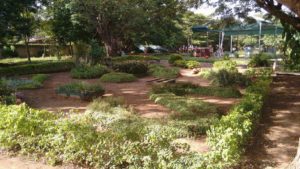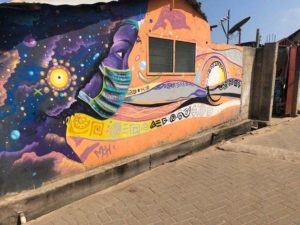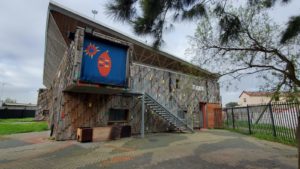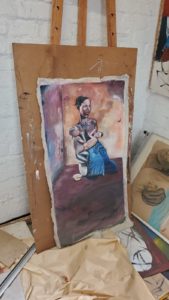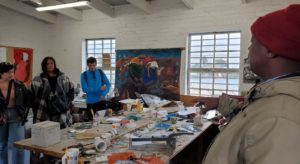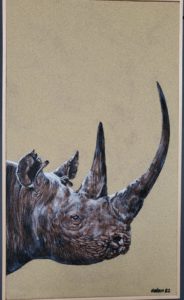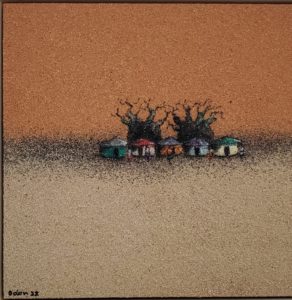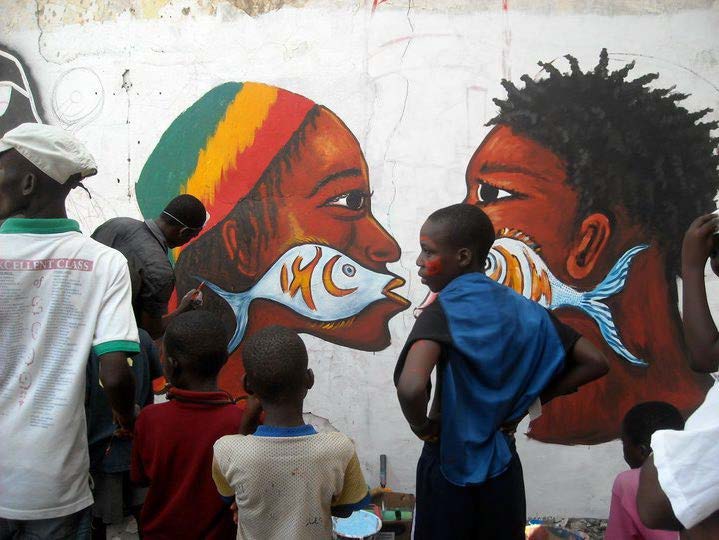
By Megan Smith
The Foundation for Contemporary Art (FCA) in Ghana is housed in a modern, modest wooden building at the W.E.B. Dubois center in the Cantonments, Accra. After rebuilding in 2015 because of flooding and a fallen tree on the building, the organization founded in 2004 by Professor Joe Nkrumah and Australian anthropologist Virginia Ryan made a vibrant comeback. The FCA offers its space to artists of all varieties for exhibitions, workshops, book talks, educational presentations, Critlabs, and networking that center development, presentation, and critical thinking of contemporary art in Ghana. Their space is also complete with an extensive library that is open to the public with books on African and world art, history, architecture, and culture. The FCA not only works on projects in their space, but they also bring art out into the community through building play spaces, murals, sculptures, and renovations that clean up run-down public areas.
(The FCA Building and Library, Photo: Smith, M. 2022)
At the FCA, public art that fosters community engagement has taken a primary focus with co-directors Adwoa Amoah and Ato Annan facilitating multiple projects around the city. Amoah received her BFA in painting from the Kwame Nkrumah University of science and technology in Kumasi, Ghana. She has collaborated with artists and organizations locally and internationally to curate, manage, and facilitate educational art projects that include, The Global Crit Clinic Ghana in 2012, 2013, and 2014, The Archive: Static, Embodied, Practiced in 2013 and 2017, and Curatorial Intensive, Accra, Ghana in 2017 (Critlab, 2022). Annan is also an artist specializing in painting, installation, sound, video, and performance and his work has been exhibited in Ghana, Côte d’Ivoire, Nigeria, Holland, Denmark, Italy, and India. He has collaborated and facilitated projects on local and international levels such as three years of The Global Crit Clinic and the smaARTpower Laboratory workshop in 2012 in Accra (Curators International, 2022). Both Amoah and Annan have an interest in public art and believe in its potential to foster community engagement and enrichment as well as “democratize” or widen the audience of contemporary art (Curators International, 2022). Together they have worked on projects in Accra that include the Chale Wote Street Art Festival from 2011-2016, the Mmofra Park project in 2014, and the Longitudinal Diologues Project in May of 2022.
The Chale Wote is Ga language and translates to “friend lets go” in English and takes place in James Town, Accra. The festival attracts over 200 artists from Ghana and around the world every year and aspires to break creative barriers with art as a tool to renovate public spaces (Visit Ghana, 2022). During Chale Wote, the streets come alive with musical performances, street painting, graffiti murals, theatre, poetry, skating, food and fashion vendors, and workshops in which the FCA is the visual coordinator during the event (Visit Ghana, 2022).
(FCA Facebook, Chale Wote Festival, July 29, 2011)
Mmofra Place was a 2014 project collaboration between the Mmofra Foundation and the FCA with the goal of building a children’s park in Dzorwulu, Accra. Mmofra translates to children in Akan language and the space was brilliantly crafted into a playground, garden plot, and natural greenery space for relaxation and community gathering. Mmofra is an inspiration for more initiatives around Accra focused on public art spaces for children to play to connect to Ghanaian culture and nature.
The Longitudinal Diologues was a collaboration between the FCA, The Line London, Arup Phase 2, and renowned Ghanaian artist Serge Attukwei Clottey in May of 2022 that was funded by The British Council’s International Collaboration Grant. The project put on workshops on teaching and discussing urgent topics including migration, climate change, and water supply in six primary schools in London and six primary schools in Accra. Pupils then crafted wearable artworks reusing everyday recyclable materials that were inspired by Clottey’s art project, Afrogallonism (FCA, 2022).
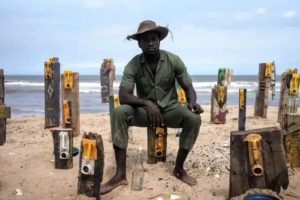
Through their creative brilliance and dedication, the FCA has established itself as a powerful, influential force in Ghana, West Africa, and the world that brings the critical reflection of contemporary art to African society. With the reopening of the city after the start of the Covid-19 pandemic, the FCA is driving forward in 2022 with more public art installations and projects to look ahead to. Amoah and Annan are in the beginning stages of planning an art walk in Accra inspired by The Line London, which is set to open in 2023 or 2024. The central vision of the project is to invite local and international artists to collaborate with Ghanaians to build artworks in public spaces that are reflective of their cultural heritage and present realities. The Art Walk will be strategically mapped out around Accra in different neighborhoods and also highlight other local attractions in the area.
Works Cited:
Kiunguyu, Kylie. 22, October 2018. Serge Attukwei Clottey: The Ghanaian artist who pioneered “Afrogallonism.” Retrieved July 14, 2022, from https://thisisafrica.me/arts-and-culture/serge-clottey-ghanaian-afrogallonism/
Critlab. (2022). Facilitators. Retrieved July 13, 2022, from https://critlab.fcaghana.org/facilitators/
Curators International. (2022). Ato Annan – About. Retrieved July 13, 2022, from https://curatorsintl.org/about/collaborators/7395-ato-annan
Foundation for Contemporary Art – Ghana. (2022). Retrieved July 14, 2022, from https://fcaghana.org/


